Switch
A switch is a versatile toggle control for switching between two states seamlessly.
- Overview
- Specs
- Guidelines
Component
Used to navigate between tabs, filter content or activate/deactivate functionalities. Switches can be either clicked or dragged to change their value.
They allow intuitive and quick interaction, improving the user experience by customizing the content to their preferences or needs.
A: Non active variation
B: Active variation
1: Label
2: Switch
3: Icon
Used for:
Binary options
When presenting users with simple binary choices, such as on/off, active/inactive, enable/disable, switches offer a clear and intuitive way to indicate and control these states;
Settings and preferences
Switches are commonly used for toggling settings or preferences, allowing users to customize their experience by turning features on or off;
Consistency
Switches offer a consistent visual pattern for indicating and controlling binary options across different parts of an interface;
Mobile-friendly
With the rise of mobile devices, switches are particularly suitable for touch interfaces, as they offer a large, tappable area for users to interact with;
Real-time updates
Switches can trigger real-time updates or actions in the interface, providing immediate feedback to users.
Don’t use for:
Complex multi-state options
When options require more than two states or are not binary choices, switches may not be suitable. Consider using checkboxes or drop-downs;
Ambiguity in meaning
If the meaning of the switch state is ambiguous or subject to interpretation, it can lead to user confusion;
Inappropriate context
In contexts where switches are not intuitive or appropriate for the action being performed, it’s best to use alternative controls. For example, in a form where users are selecting from a range of options rather than toggling an on/off state. Consider using radio buttons in this case;
Overuse of switches
Avoid overloading the page with unnecessary switches, keeping them only when they provide clear value for the user experience.
Demo
Access the Figma file and inspect element using Dev Mode.
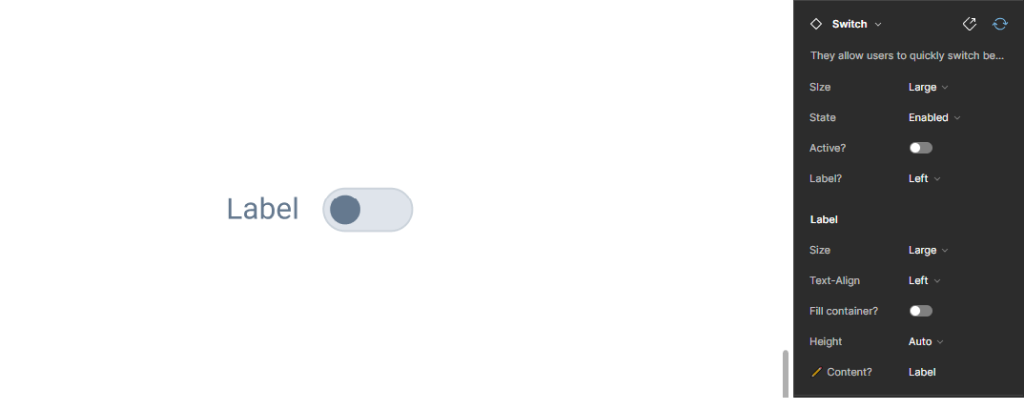
Last Update
- Updated overall switch design;
- Added large variable;
- Updated label typography;
Related
Button Group
States
Not Active
Enabled
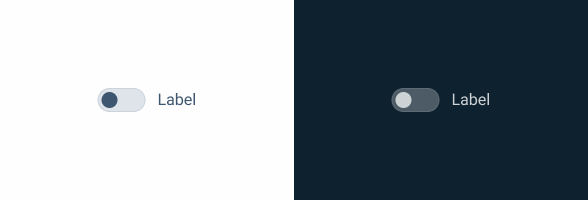
.enabled {
border-color: var(--grey-5);
background-color: var(--grey-4);
color: var(--grey-8);
label-color: var(--grey-8);
}Hover
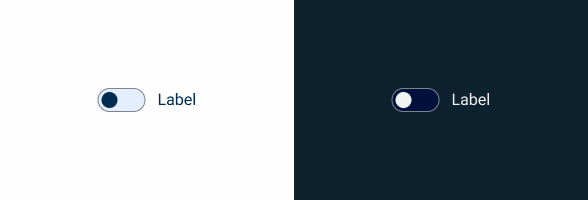
.hover {
border-color: var(--grey-6);
background-color: var(--theme-10);
color: var(--grey-9);
label-color: var(--grey-9);
}Pressed
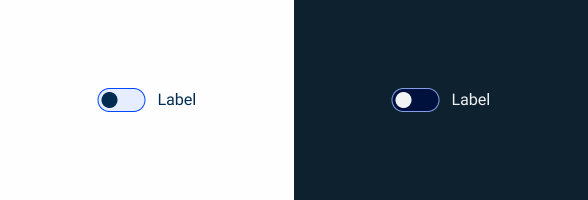
.pressed {
border-color: var(--theme-100);
background-color: var(--theme-10);
color: var(--grey-9);
label-color: var(--grey-9);
}Disabled
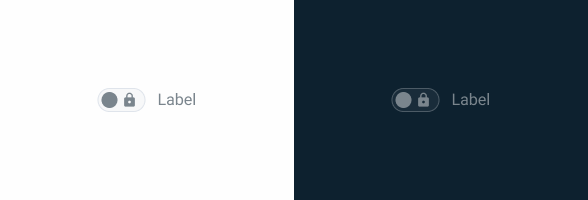
.pressed {
border-color: var(--grey-4);
background-color: var(--grey-2);
color: var(--grey-6);
icon-color: var(--grey-6);
label-color: var(--grey-6);
}Focus

.focus {
border-color: var(--grey-9);
background-color: var(--grey-4);
color: var(--grey-8);
label-color: var(--grey-9);
}Active
Enabled
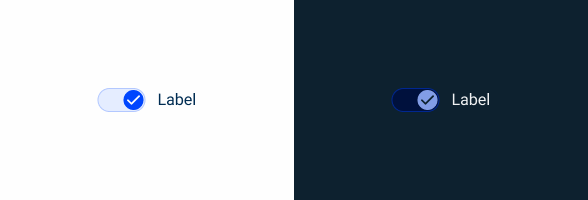
.enabled {
border-color: var(--theme-40);
background-color: var(--theme-10);
color: var(--theme-100);
icon-color: var(--grey-1);
label-color: var(--grey-9);
}Hover
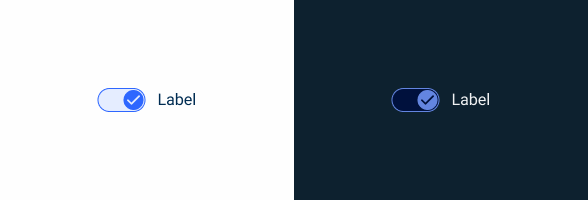
.hover {
border-color: var(--theme-80);
background-color: var(--theme-10);
color: var(--theme-highlight);
icon-color: var(--grey-1);
label-color: var(--grey-9);
}Pressed
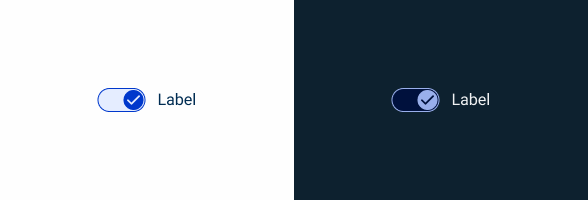
.pressed {
border-color: var(--theme-highlight);
background-color: var(--theme-10);
color: var(--theme-highlight);
icon-color: var(--grey-1);
label-color: var(--grey-9);
}Disabled
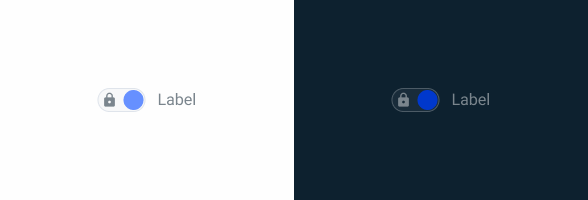
.disabled {
border-color: var(--grey-4);
background-color: var(--grey-2);
color: var(--theme-60);
icon-color: var(--grey-6);
label-color: var(--grey-6);
}Focus
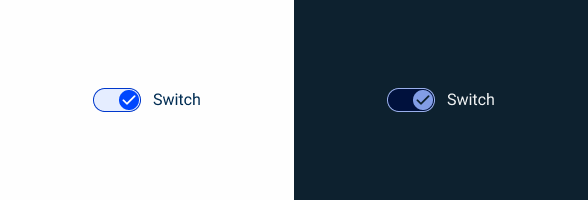
.focus {
border-color: var(--theme-highlight);
background-color: var(--theme-10);
color: var(--theme-100);
icon-color: var(--grey-1);
label-color: var(--grey-9);
}Size
Small

.small {
gap: var(--spacing-8);
border-radius: var(--rounded);
icon: icon: 12px;
label: var(--Label-small);
}Regular
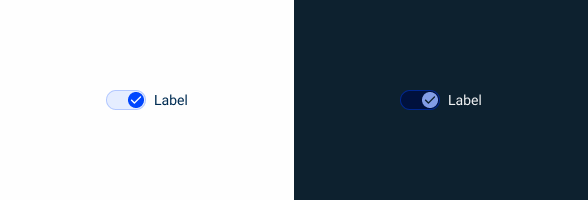
.regular {
gap: var(--spacing-8);
border-radius: var(--rounded);
icon: icon: 16px;
label: var(--Label-regular);
}Large
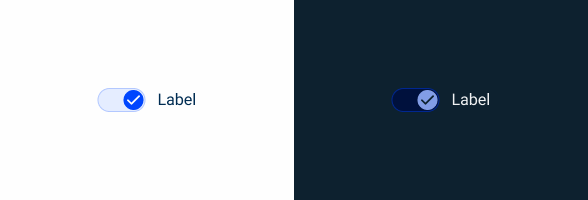
.large {
gap: var(--spacing-12);
border-radius: var(--rounded);
icon: icon: 20px;
label: var(--Label-large);
}Useful links

Consult our Figma file to access our assets and inspect them in dev mode.

This component is or will be provided by the Polygon framework. See its documentation to learn more.
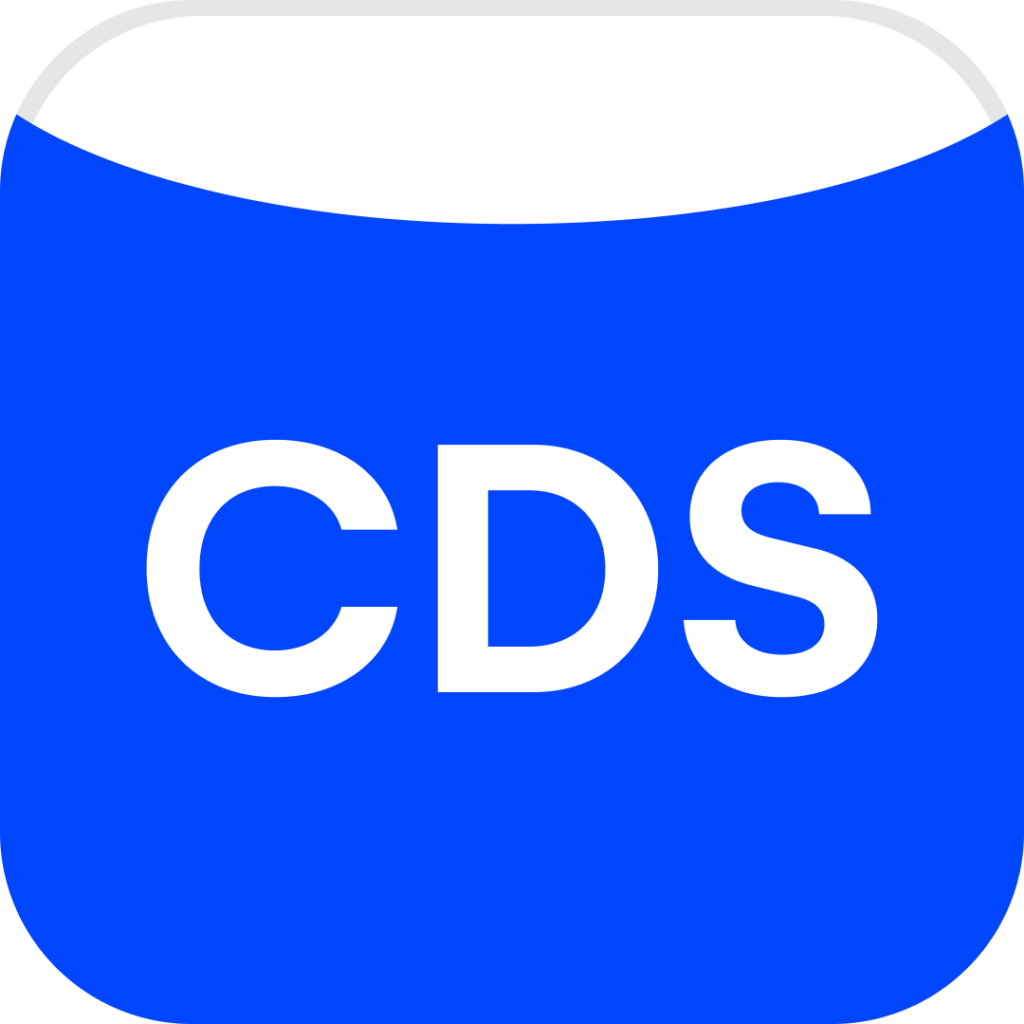
This element is in line with the guidelines of the CDS (Cegid Design System). Find out more.
Behavior
Switch Status
The switch toggles between the disabled state and the active state with a click or an enter (when in Focus state).
The entire switch area, including the label, is clickable.
In the disabled state, the switch does not allow switching between states.

When a label is too long for the available space, a second line of text should be created.
To avoid accidental errors, do not use the switch for irreversible or critical actions without additional confirmation from the user.
Avoid using switches to control opposing options.